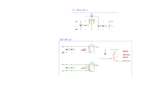MacIntoshCZ
Active Member
Hello there after a while =),
Blue trace is from DDS generator, its should simulate feedback from current transformer - tag: CT
Yellow trace is output from VCO.
I though phases will be same. Howeever current in coil is shifted by 90 degrees so i should no complain about that... I will use this for driving halfbridge.
Can someone explain why its shifted?
Thanks
Blue trace is from DDS generator, its should simulate feedback from current transformer - tag: CT
Yellow trace is output from VCO.
I though phases will be same. Howeever current in coil is shifted by 90 degrees so i should no complain about that... I will use this for driving halfbridge.
Can someone explain why its shifted?
Thanks




